Thursday, April 6th - Friday, April, 21st
Tuesday, our last day in California, Kathy drove us up to Kaweah Lake Dam which was completed in 1962 and is 250 feet high and 1,000 feet at its base. It holds back runoff waters from high in the Sierras that is used for irrigation, hydroelectric power and recreation. The fusegates, the large concrete boxes on the top of the dam, were built in 2005 to protect the dam in case of a flood by sacrificing themselves, breaking away leaving a gap to let water flow out of the lake much faster, preventing the water from getting too high and flowing over the top of the dam.
The yellow flowers on the side of the hill (lower left) are called fiddleneck.
Kaweah River flowed through this narrow valley for thousands of years with several forks flowing together upstream at Three Forks. Downstream it flows into four creeks and from time to time its waters would flow all the way to Lake Tulare, once the largest freshwater lake west of the Rockies.
Pumpkin Hollow Bridge at Three Forks. Wednesday we drove all the way to somewhere in Oregon and finally arrived at our destination in Florence, Oregon about noon on Thursday. We stayed at Thousand Trails South Jetty Resort and just cuddled up in the RV for a couple days while it rained and rained. The town of Florence is famous for the exploding whale video. In November of 1970 a dead sperm whale was blown up by the Oregon Highway Division in an attempt to dispose of the rotting carcass. The explosion threw whale flesh over 800 feet away. The incident became famous when humorist, Dave Barry, wrote about it in his newspaper column. It became well-known internationally a few years later when the video circulated on the internet.
Saturday we finally ventured out in the rain for lunch at Mo's where I had their famous clam chowder that I love and John had shrimp while we looked out over the bay. Afterwards I ambled through some of the artsy shops down on the waterfront.
These kitchy little clocks in one shop caught my eye. The base is a small bread loaf pan. The elephant's trunk is made out of bottle caps. The bat's antennae and feet are made from spoons and forks.
I think the dragonfly's head might be a sardine can with numerous pans and lids for body and tail and spatulas for wings.
Monkey with bottle cap ears, spoons for hands and forks for legs.
These seal sculptures are the theme all around town.
The azaleas are gorgeous. We huddled up in the camper on Sunday, but Monday we ventured out in the rain again to go to the buffet at Three Rivers Casino. We had a coupon for $10.00 worth of free play, so after we ate, we decided to give it a go. Being complete novices at this gambling stuff, it took us a while just to figure out how to get our free credits in the machine and then we had no idea how to play. So we just kept pushing different buttons and watching all kinds of symbols flashing around, having no idea what we were doing. However, we could see our credit balance getting lower and lower. All of a sudden we started seeing all kinds of lights and hearing lots of bells and such, so we figured it must be good. When it finally stopped, we had won $47.00. We cashed it in and left, laughing all the way at how totally stupid we were.
Tuesday more rain, but we went to the Siuslaw Pioneer Museum in town, named for the river and valley here. This is an Edison Standard Phonograph 1888 to 1892. You placed the cylinders on the machine and cranked the handle to get music.
This is a Chinese coiffure pillow made out of porcelain to rest your head on so as not to mess up your hairdo.
Complete chamber set purchased from an estate sale in the 1930's. Pitcher, soap dish, shaving mug, chamber pot and receiver.
And who knew? A musical TP holder that played O DuLeiber Augustin and Bei der Blonden Kathrein. I remember my Dad singing that first song.
This was like a shadow box, about 4 inches deep from the wall. It is a music box about 18" x 24" that, when wound, plays music and the baby revolve's from the Padre's arms up toward the heavens and back again. It was found in an abandoned house in California in 1945.
Down front is a Farberware table crumber, above is the silent butler, dustpans used to catch the crumbs brushed off the table cloth. The Farberware Company was started by tinsmith S.W. Farber in his basement in The Bronx in 1900. They were the first company to introduce a coffee percolater in 1930 and made the first electric fry pan that could be immersed in water in 1954.
This machine was for sizing eggs.
Hair holders, choker, brooch, watch fob and necklace made by Isabella Kyle from her own hair, a popular hobby trend of days gone by.
This Dictaphone was a dictating machine and transcriber used in a doctor's office in 1955. Now we can do it all on a smart phone.
They had a bunch of campaign buttons, including one for our 6th president, John Quincy Adams.
Florence Telephone Switchboard 1940 to 1960. This was back in the day of party lines, when people could listen in on other's calls and get all the community gossip. Back then people resented those who listened in and spread their business around town. Now we have Facebook where everyone just skips that middle man and puts all their personal stuff right out there for the whole world to see.
The phones of long ago had a mouthpiece on the front and a crank on the side, which when turned, rang every telephone on the party line in the early 1920's. Only the party with a given sequence of rings was supposed to answer, such as two longs and a short. You rang the operator to connect to folks outside your own system. The disadvantage was that busy bodies with little else to do, quite often carefully lifted the receiver to listen in. If you heard someone pick up during your call, you were supposed to be courteous enough to cut your call short, so they could have a turn to make a call.
At the top of the old telephone was a big pull switch connected to the outside lines that entered the house. When the first clap of thunder struck, the person nearest the phone dashed over and yanked the switch. You were led to believe that if you didn't, balls of fire might shoot out of the mouthpiece and sear through the dining room table. Most important was the line call, an uninterrupted cranking for a half minute or so. This prolonged ringing brought everyone on the party line to the phone. It signaled an emergency such as a fire, injury or other life-threatening situation.
Not a very good picture, but an interesting description.
Rules for Teachers 1872
1. Teachers each day will fill lamps and clean chimneys. (I hope that means the chimneys on the lamps.)
2. Each teacher will bring a bucket of water and a scuttle of coal for the day's session.
3. Make your pens carefully. You may whittle tips to the individual taste of the pupils.
4. Men teachers may take one evening each week for courting purposes, or two evenings if they attend church regularly.
5. After ten hours in school, the teacher may spend the remainder of the time reading the Bible or other good books.
6. Women teachers who marry or engage in unseemly conduct will be dismissed.
7. Every teacher should lay aside from each pay a goodly sum of his earnings for his benefit during his declining years, so that he will not become a burden on society.
8. Any teacher who smokes, uses liquor in any form, frequents pool or public halls, or gets shaved in a barber shop will have good reason to suspect his worth, intention, integrity and honesty.
9. The teacher who performs his labor faithfully and without fault for five years will be given an increase of twenty five cents per week in his pay, providing the Board of Education approves.
Dolls through the 1700's and 1800's were usually wood combined with leather, wax and porcelain. In the 20th century doll making shifted to plastics and polymers, so they could be mass-produced at lower prices. Brown was the dominant eye color until the Victorian Era, when blue eyes became popular, inspired by Queen Victoria. Raggedy Ann was created by American writer Johnny Gruelle in a series of books he wrote and illustrated. He received a patent for his doll in 1915 and introduced her to the public in his 1918 book Raggedy Ann Stories. The sequel Raggedy Andy Stories in 1920 introduced her brother in his sailor suit and hat.
These are unique. I had never seen them before. The Apple Doll is a North American cultural phenomenon where the doll's head is made from dried apples. The apple is peeled, then carved with facial features. Next it was left to dry for several days or weeks. When completely dry, it was positioned on top of a wire frame which is shaped into the rest of the doll's body and covered by hand-sewn clothing.
This a 1917 Maytag washing machine that was used until electricity was available in the late 1930's. It has a motor that runs on gas. The person who owned it put gas in it about 20 years ago and had it running. It was a modern marvel in its day.
The earliest fabric that has ever been found is a pair of hand-knitted woolen socks, found in a tomb in Egypt that was built in the 4th century B.C. The oldest knitting needle is on display in a museum in England, dating from the Iron Age. All knitting was done by hand until 1589 when English clergyman William Lee invented a machine that could knit stockings. Queen Elizabeth refused a patent at that time on the grounds that it would put hand knitters out of work. However, the machine was sold in other countries.
Dragon fruit or pitaya is the fruit of several cactus species indigenous to the Americas. I saw it in the grocery store, but I'm not sure how you eat it or serve it. Wednesday we went to the movie Going in Style which was very funny. Thursday we moved to Neskowin Creek RV Resort just a few miles north of Lincoln City, Oregon where it continued to rain. These are pictures of some unusual plants at our campground.
Saturday the sun finally came out, so we drove north up along the coast. We drove through Pacific City, Oceanside, and did the Three Capes Drive, ending up in Tillamook for some of their famous ice cream and some cheese to take home.
The marshy fields and pastures were covered with these pretty yellow flowers. I found out later it is called skunk cabbage. It is a carnivorous plant and it is edible. These are lots of recipes on the internet for how to fix it.
It rained about 12 days out of the 14 days we were on the coast here. Saturday we drove north on scenic Highway 101. It is a winding drive through small coastal communities with waysides and parks for spectacular vistas. We took the Three Capes Loop connecting Cape Kiwanda, Cape Lookout and Cape Meares. No RVs or trucks allowed on this very narrow, winding loop. We stopped at Winema Wayfinding Point to look for whales, but didn't spot any. Almost any pull-off along here is supposed to be good for spotting gray whales in winter and spring as they migrate north or south.
After Three Capes Drive, we came back to the main road and dairy country. We drove into Tillamook to the factory to taste their famous cheese curds, had some of their delicious ice cream and bought some cheese to bring home. We also bought some of their ice cream a couple days later at the grocery store when we were closer to home, so it wouldn't melt. When the milk arrives at the Tillamook factory, it is turned into cheese or ice cream within 24 hours. They make approximately 170,000 pounds of cheese daily, 60 million pounds per year. Every week they package approximately one million pounds of cheese in Tillamook. They also make cheese at a second factory in Boardman down on the Columbia River Gorge.
Monday night we met up with John's cousin and wife for fish, shrimp and clam chowder at Dory Cove. Tuesday David and Karen took us on a little tour of the area. Our first stop was here at Devil's Lake right in Lincoln City to look for bald eagles, but we didn't see any.
It was a cold, windy day, but at least it wasn't raining.
Then we drove south to the town of Depoe Bay, the world's smallest harbor. It was named for Charles DePoe, a Joshua Indian from the Coast Reservation who, with family members, received allotments of land in 1894 when the reservation was closed. The town was formed in 1927, the same year the Depoe Bay Bridge was completed.
John and David and Karen in downtown Depoe Bay.
Just behind them below the rock wall. The central coast is a land of contrasts with coastal rain forest, beautiful beaches, dramatic capes, headlands and mountains edging the sea and waves breaking on beaches, crashing onto rocky headlands or churning in basalt chasms.
On the street next to us was this little old Porsche with a stuffed tweetie bird fastened to the suitcase on the back and TWETPIE on the license plate. Right across the street next to the taffy shop was the Hi Cascade Premium Cannabis shop, one of many you'll spot in all the little towns along the coast.
We stopped at Boiler Bay State Park Scenic Viewpoint. We were standing at the fence that had many signs warning you not to go past the fence, when these four young people jumped the fence and headed out on the rocks. There is another fenced off area out there on the rocks where a huge hole goes straight down to the ocean.
They just walked right out to the very edge. We didn't stick around for the accident that was just waiting to happen. Spouting horns are formed by the eroding or weaker material, or the presence of lava tubes withing the coastal rock formations, causing the pulse of the sea to be released and thrown skyward. These spectacular display vary with the power of the waves.
This is Fogarty Creek running out to the ocean.
This is a really nice beach with some nice quiet spots protected from the wind.
Only four other people here, a very quiet and secluded beach.
Wednesday we met in Lincoln City again for lunch, this time at Mo's for more fish, shrimp and their famous clam chowder. This is the view of the bay out the window. They have a really nice beach here, also. Then David and Karen came back to the campground and crawled in a window for us and helped us take apart our door lock, as something had broken off inside and we couldn't get the door open to get back in. We had to tie the door shut and stop in Portland at Camping World and get a new one when we left on Thursday.
There were about 30 or 40 of the cutest bunnies running wild at our campground, which was an unexpected treat for our Easter weekend there.
Our grandkids were waiting at the door to run out and see us when we arrived here in Helena about 10:30 today, Friday, April 21st. We will be here until June 10th, so probably not much blogging until next fall. Have a great summer everybody. We hope to see some of you along the way this summer.
Tarra












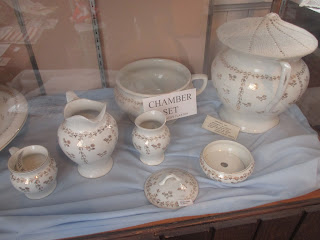












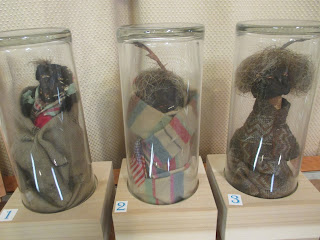


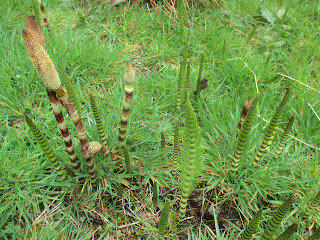







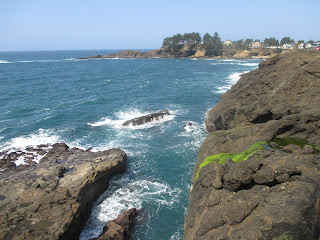
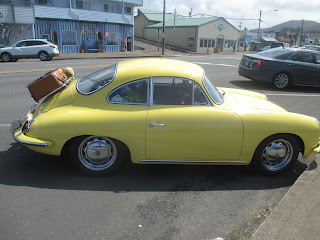


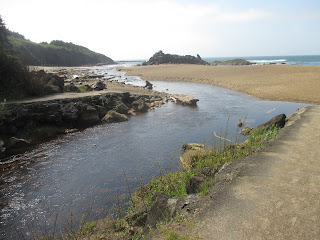






No comments:
Post a Comment